I was hoping to keep outside dimensions of the cabinet, but I'm more or less flexible on internals, for the best result within limits.
.....
Unfortunately, the overall outer dimensions are determined by the internal structure. Horns are designed inside out.
To simplify, the path length determines the cutoff frequency, and the flare determines how it loads the driver. So, for a particular target LF cutoff, your path length is pretty much determined, give or take by only a small proportion as the loading changes. And next, the flare, or the cross-section area and how it changes along the path. These 2 factors - path length and cross-section area - determine how big your horn will be.
Taking advantage of the boudaries, as mentioned above, can get you the smaller "pi". The smallest 1/4pi is by pushing the horn into the corner. In theory you got 8-fold of the cross-section areas (by mirrored images).
So, for limiting the overall size, the best solution is corner loaded. You might have to reconsider your goal and adjust the thinking of this design. If you want to stick with BLH, and the smallest footprint is a major concern, then your best bet is corner loaded BIB, not a 'floating' floor loaded BLH. Of course you can also push it into the corner, but the size of terminus wouldn't be ideal and needs some change. So, planning it well in advance should be better.
For a 40Hz bass horn, it's inevitably very big, even with the help of corner loaded. You may refer to the link I mentioned earlier in this thread. That was a 40Hz horn simed by corner loaded (or very close to it). In a word, HUGE.
K-horn is another good example. It's a corner horn and said to have 35Hz cutoff. It's quite big already, however many people still think it's a severely truncated horn and 'cheating' by the extensions of walls and floor, which is highly room-dependent, unclearly defined and unpredictable.
As you shrink the cross-section areas for smaller overall size, your horn is more and more like a pipe, and you get worse and worse loading and response. Lower efficiency and ragged response are quite common in those 'good looking' and slim back load "horns". We DIYers build horns for our own satisfaction, so why taking all those commerce related compromises when designing our work? Getting in such trouble of building a horn, why all those cuttings here and there?
That's why I said I don't understand how to squeeze 2 drivers into one horn - in theory it needs double cross-section areas along the path, thus double the volume. Very scary by just thinking.
One possible benefit I can think of is maybe 2 drivers in a horn can utilize slightly different path lengths to average out the ragged response caused by the pipe resonances. However I guess that would be very hard to get right and not easy to sim precisely.
In this regard, I tend to trust Hornresp and avoid additional trial and error in the woodworking stage. I guess no one likes to rebuild folded BLH again and again.
In addition, in a 'purity' POV, 2 fullrangers in a cab is not as 'pure' as 1, no? (and Lowther is not cheap
Sorry if I spoiled the fun. Don't get me wrong. I LOVE bass horns. I give up just because I don't have that space. And it's slightly compensated by designning some for friends.
Just my 2c. For your reference.
CLS,
As some others have mentioned, the Pi, or boundary effect of a floor level horn mouth effectively doubles the area of the mouth's real size. It also prevents timing issues that result from floor bounce and allows a bit of bass extension.
Likewise, the use of the two drivers in the Acedemy design allows for some "air" in the treble as well as increased sound pressure levels. Probably the major benefit, is that the design allows you to avoid the need for Baffle Step Circuitry which would require attenuating the overall output (above the baffle step frequency) by anywhere from 3 to 4 dB.
It's quite an elegant solution, IMHO.
So, you think building the Academy, just make the horn mouth downwards and the floor reflector, will be a sweet and nice sounding setup?
Unfortunately, the overall outer dimensions are determined by the internal structure. Horns are designed inside out.
To simplify, the path length determines the cutoff frequency, and the flare determines how it loads the driver. So, for a particular target LF cutoff, your path length is pretty much determined, give or take by only a small proportion as the loading changes. And next, the flare, or the cross-section area and how it changes along the path. These 2 factors - path length and cross-section area - determine how big your horn will be.
I'm actually considering to laminate the cabinets. Mill the horn path, put X-number of panels together to get the correct width, then put a sidepanel on each side, plus a front and a top plate. Then, it should be possible to alter atleast the cross section area if the result is less than optimal.
Taking advantage of the boudaries, as mentioned above, can get you the smaller "pi". The smallest 1/4pi is by pushing the horn into the corner. In theory you got 8-fold of the cross-section areas (by mirrored images).
So, for limiting the overall size, the best solution is corner loaded. You might have to reconsider your goal and adjust the thinking of this design. If you want to stick with BLH, and the smallest footprint is a major concern, then your best bet is corner loaded BIB, not a 'floating' floor loaded BLH. Of course you can also push it into the corner, but the size of terminus wouldn't be ideal and needs some change. So, planning it well in advance should be better.
My biggest consern is WAF. Even got a little trouble with integrating the "huge" Fidelio's!
My second consern is that I got only one corner at the moment, so no help for the left front.
For a 40Hz bass horn, it's inevitably very big, even with the help of corner loaded. You may refer to the link I mentioned earlier in this thread. That was a 40Hz horn simed by corner loaded (or very close to it). In a word, HUGE.
K-horn is another good example. It's a corner horn and said to have 35Hz cutoff. It's quite big already, however many people still think it's a severely truncated horn and 'cheating' by the extensions of walls and floor, which is highly room-dependent, unclearly defined and unpredictable.
As you shrink the cross-section areas for smaller overall size, your horn is more and more like a pipe, and you get worse and worse loading and response. Lower efficiency and ragged response are quite common in those 'good looking' and slim back load "horns". We DIYers build horns for our own satisfaction, so why taking all those commerce related compromises when designing our work? Getting in such trouble of building a horn, why all those cuttings here and there?
My answer is WAF, WAF, WAF..
That's why I said I don't understand how to squeeze 2 drivers into one horn - in theory it needs double cross-section areas along the path, thus double the volume. Very scary by just thinking.
One possible benefit I can think of is maybe 2 drivers in a horn can utilize slightly different path lengths to average out the ragged response caused by the pipe resonances. However I guess that would be very hard to get right and not easy to sim precisely.
In this regard, I tend to trust Hornresp and avoid additional trial and error in the woodworking stage. I guess no one likes to rebuild folded BLH again and again.
In addition, in a 'purity' POV, 2 fullrangers in a cab is not as 'pure' as 1, no? (and Lowther is not cheap)
Don't got enough knowledge to argue in a reasonable way with you. The only thing I know is that the Fidelio's sound stunning in my ears with the PM6A's. Because I like a little more attack I have ordered the DX3 driver with phase equalizers.(Need new drivers due to a disagreement between the PM6A's and my 2year old kid..BOTH!) But yes, I have been worrying a little with 2drivers and possible issues in between them.
Not cheap, by any means!
Sorry if I spoiled the fun. Don't get me wrong. I LOVE bass horns. I give up just because I don't have that space. And it's slightly compensated by designning some for friends.
No fun spoiled. I'm a huge fan of thinking before doing. And yes, space is needed for really non-compromised horns.
...
My answer is WAF, WAF, WAF..
....
Then my sincere suggest is, give up ordinary BLH. (and I think the laminated construction won't give you the flexibility you need...
Think more about BIB, MLTL, or other slim designs that can operate properly in their slim cabinets.
BTW, Hornresp can sim those, too.
As to the 'more attack' you want, I think it's a much more complex thing than you might expect. The key can be anything.
Welcome to join our journey.
Or, how about this http://www.diyaudio.com/forums/full-range/176792-ob-lowther-pm6a.html

It's a very hard turn, I know.
But I think OB, in some ways, is more elegant in appearance than most bulky 'boxes' I've seen. OK, at least for me.
It's a very hard turn, I know.
But I think OB, in some ways, is more elegant in appearance than most bulky 'boxes' I've seen. OK, at least for me.
Or, how about this http://www.diyaudio.com/forums/full-range/176792-ob-lowther-pm6a.html
It's a very hard turn, I know.
But I think OB, in some ways, is more elegant in appearance than most bulky 'boxes' I've seen. OK, at least for me.
I agree!
I can tell you first hand, that the Lowther/Tone Tubby OB was absolutely wonderful sounding and it's fairly easy to build, especially compared to any possible horn configuration.
It's probably what I'd do if I were faced with that choice.
Best Regards,
TerryO
Then my sincere suggest is, give up ordinary BLH. (and I think the laminated construction won't give you the flexibility you need...)
Think more about BIB, MLTL, or other slim designs that can operate properly in their slim cabinets.
BTW, Hornresp can sim those, too.
What is BIB?
About ruling out the Academy. I want to have a theoretical reason NOT to use the cabinet. how will it work with 2x DX3's? That's why I want to model the Academy. And, when that is check, is it possible to make it any better with a floor reflector of any shape?
If that's not working or modeling right, or close to good, then I'll discard it.
Then We got the Fidelio. That cabinet is what I got today. A little more low-end, and it's perfect! How will moving the horn mouth down, and a floor reflector do here? This one is a good one, but have no idea about how it models:
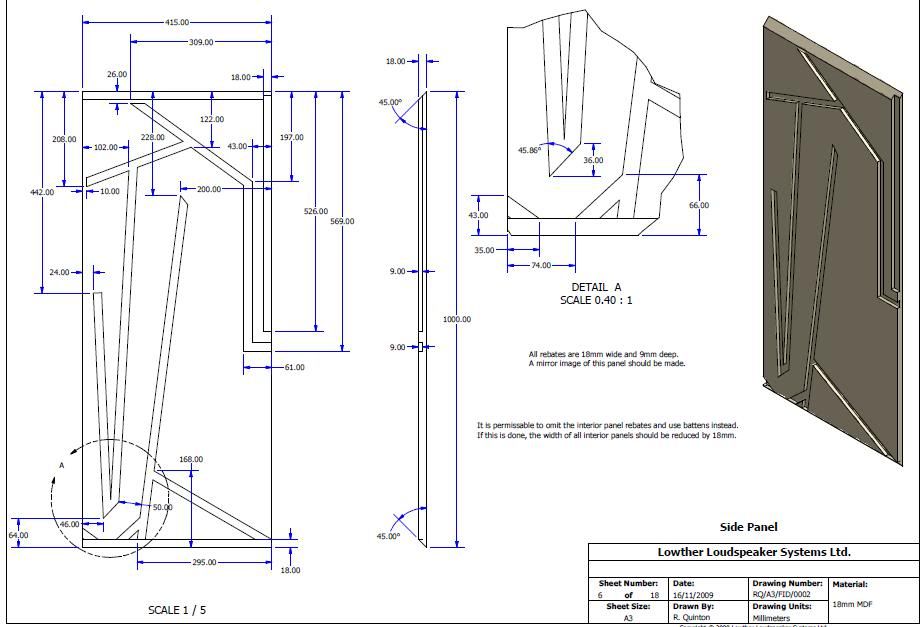
A better horn?
As to the 'more attack' you want, I think it's a much more complex thing than you might expect. The key can be anything.
I know from experience the DX2 and DX4 sounds like they got a little more fresh spark than the PM6A, so I wanted to see what will happen with DX3's when this incident happened with the PM6A's.
Welcome to join our journey.
Thank you.
Or, how about this http://www.diyaudio.com/forums/full-range/176792-ob-lowther-pm6a.html
It's a very hard turn, I know.
But I think OB, in some ways, is more elegant in appearance than most bulky 'boxes' I've seen. OK, at least for me.
Hmm.. you are right.. It's a really sharp turn!
I agree!
I can tell you first hand, that the Lowther/Tone Tubby OB was absolutely wonderful sounding and it's fairly easy to build, especially compared to any possible horn configuration.
It's probably what I'd do if I were faced with that choice.
Hmm, I know someone with a pair of OB's.. You make me want to check them out a little, atleast!
Building a complicated cabinet is just more time and planning!
A little more meditating is required.
Then I'd urge you to try hornresp as soon as possible. I saw quite some threads about how to use it. I believe you can find it here easily. Then you can find out how they look like in the sim.
BIB is "Bigger Is Better", a special type of back loaded 1/2 wave length taper horn. You may find quite some threads about it just over here, too.
BIB is "Bigger Is Better", a special type of back loaded 1/2 wave length taper horn. You may find quite some threads about it just over here, too.
Then I'd urge you to try hornresp as soon as possible. I saw quite some threads about how to use it. I believe you can find it here easily. Then you can find out how they look like in the sim.
Yes, I'm intending to do so. But first I got to find a freeware construction program with scaling to get my numbers first.
Thank you, I'll look into it.BIB is "Bigger Is Better", a special type of back loaded 1/2 wave length taper horn. You may find quite some threads about it just over here, too.
Okay,
Some hours messing with Google Sketchup gave me this:
Replicated the Fidelio:
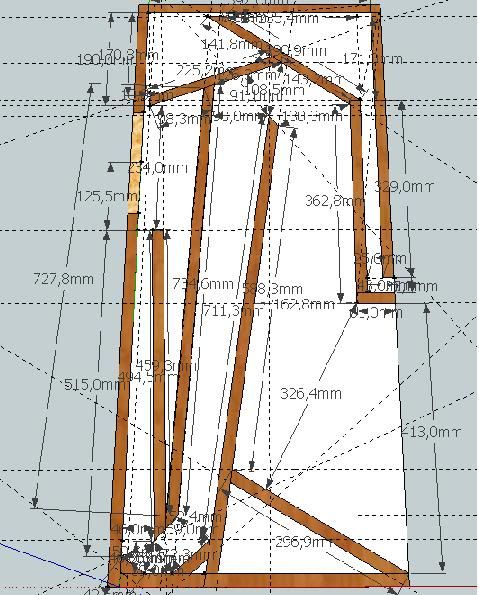
And how I was thinking a downward firing horn will fit:
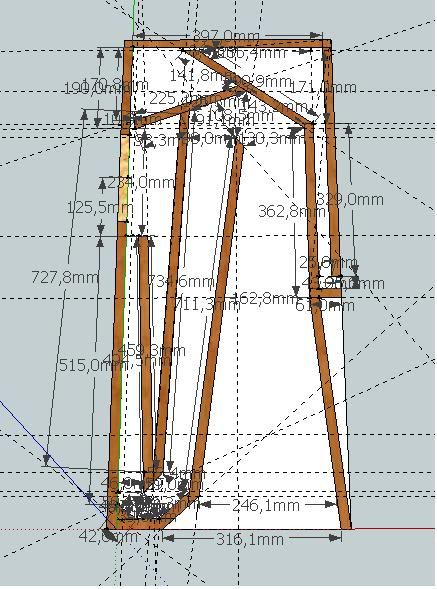
I need a little advice. How to make the center line and lenght of the horn?
I'll share the sketch files if someone ask, or I get to know how to!
Then I'm able to get the data and use Hornresp for it.
Have a nice evening.
Some hours messing with Google Sketchup gave me this:
Replicated the Fidelio:

And how I was thinking a downward firing horn will fit:

I need a little advice. How to make the center line and lenght of the horn?
I'll share the sketch files if someone ask, or I get to know how to!
Then I'm able to get the data and use Hornresp for it.
Have a nice evening.
I usually use 3 conical sections to make up a bass horn. This method gives the balance between simple/doable and precision. And you can 'form' the appox contour of the flare by that. As mentioned earlier, you don't need very precise dimensions at this stage.
And I also do it the opposite way of yours. I play with the numbers in Hornresp first to get an acceptable response. That's always A LOT LARGER than expected. Then I'd try to shrink it, to a point the response is worsened to the limit I can stand.
After that, I do the foldings and fine tune the detail dimensions. (Also recheck the response in Hornresp...)
Or you may use the auto-config tool in Hornresp to get a 'perfect' horn in the first stage. Take the 3 essential numbers: CSA of throat and mouth, and total length, then try to transform them into 3 conical sections to get the most similar response.
Why 3 sections? I think it fits best to the most commonly seen and reasonable folding.
And I also do it the opposite way of yours. I play with the numbers in Hornresp first to get an acceptable response. That's always A LOT LARGER than expected. Then I'd try to shrink it, to a point the response is worsened to the limit I can stand.
After that, I do the foldings and fine tune the detail dimensions. (Also recheck the response in Hornresp...)
Or you may use the auto-config tool in Hornresp to get a 'perfect' horn in the first stage. Take the 3 essential numbers: CSA of throat and mouth, and total length, then try to transform them into 3 conical sections to get the most similar response.
Why 3 sections? I think it fits best to the most commonly seen and reasonable folding.
...And I also do it the opposite way of yours. I play with the numbers in Hornresp first to get an acceptable response. That's always A LOT LARGER than expected. Then I'd try to shrink it...
...Or you may use the auto-config tool in Hornresp to get a 'perfect' horn in the first stage. Take the 3 essential numbers: CSA of throat and mouth, and total length, then try to transform them into 3 conical sections to get the most similar response...
Okay, something like this?
DX3 8ohm aluminium coil parametres:
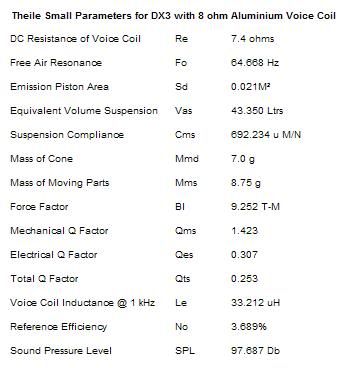
Hornresp, 30HZ lower rolloff corner and 1000Hz upper rolloff corner
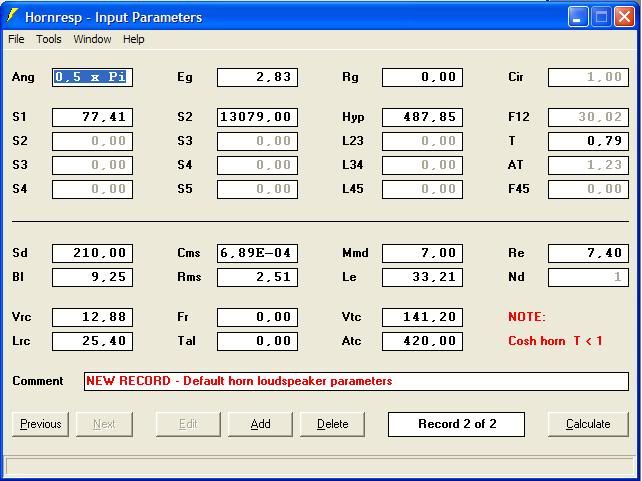
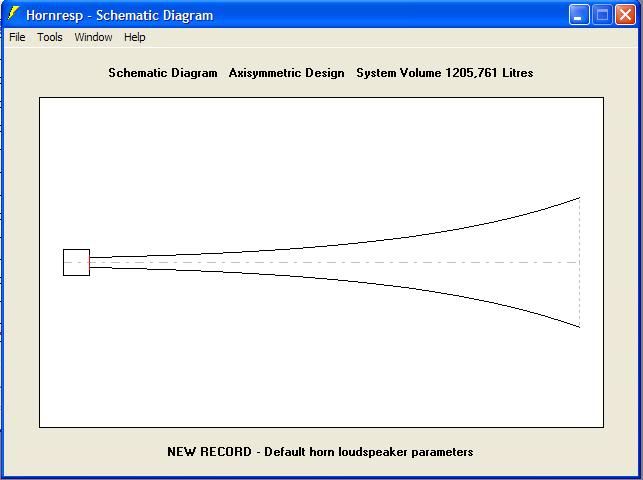
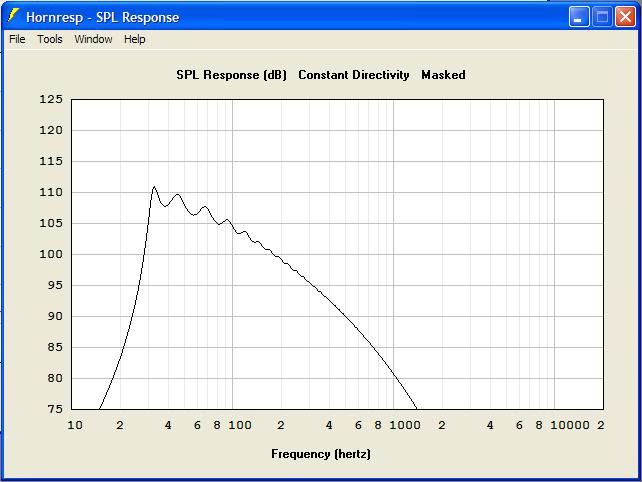
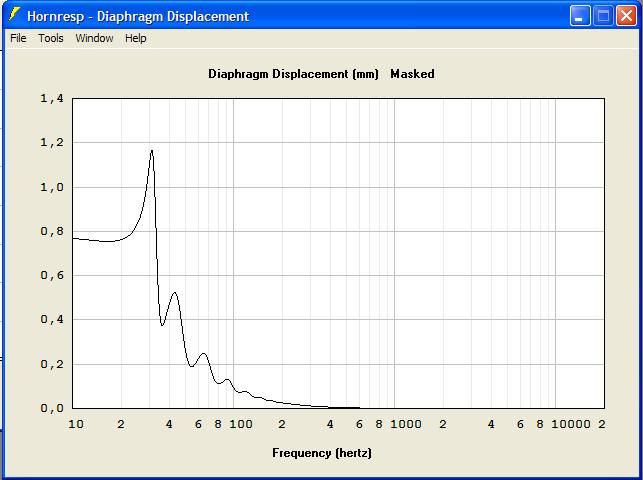

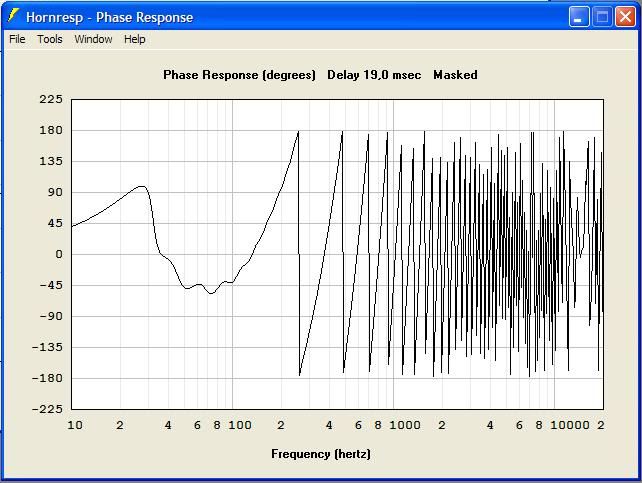
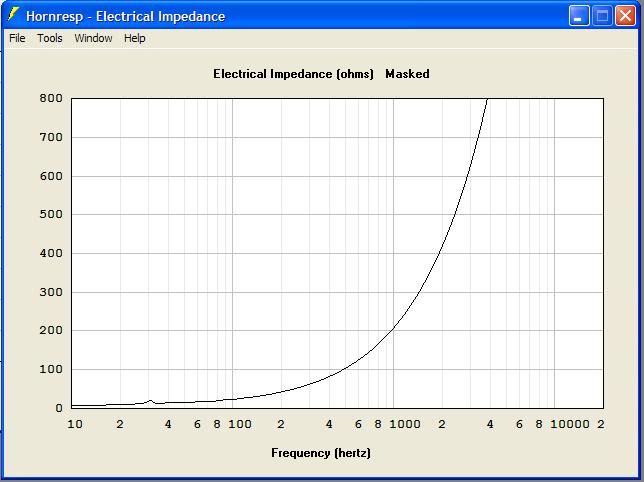
Look at max SPL at 5W of power, that should be good, within +/- 3db?
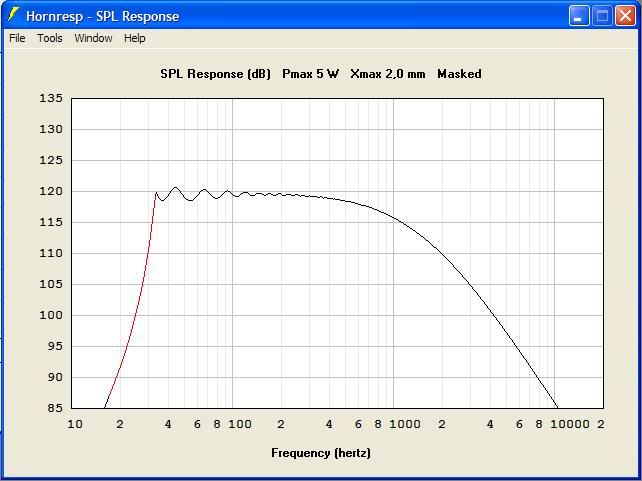
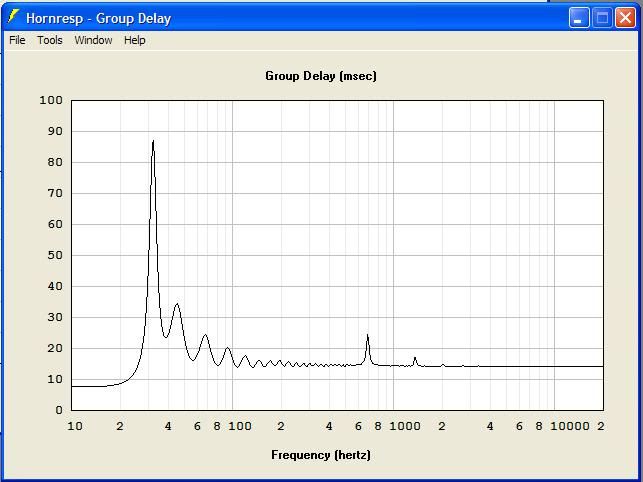
Is this the start I will have to use for the shrinking process and folding?
If anyone got time for it, I would love a diagram for diagram explaination of what to look for in the pictures.
And also, when I am to input max diaphragm displacement, +/- 1mm is a total of 2mm's , right?
EDIT:
The three numbers from that will be:
Throat = 42,95cm2
Mouth=13079cm2
Lenght=543,65cm
Last edited:
And also, when I am to input max diaphragm displacement, +/- 1mm is a total of 2mm's , right?
output SPL ought to be "one way", 1mm
Yes, pretty much, you got it. (and, like tinitus said, the Xmax in hornresp is only one way, like in most other reasonable situations...)
And now you also got the idea of what I've mentioned - how large it could be. Mouth of 13079cm^2 means a square of 114.36 cm per side, (or about 100cm x 130cm). And that's for corner position which is very hard to obtain in reality. Except for pro sound stacked bass horns, I don't know of any horns in this size.
In adiition, your 30Hz target brought you a path length over 5m. That's also way too long and I've never seen in any commercial products. Even the big guys in pro sound (Lab horn, Bassmaxx.. etc) are not that long (big).
So, now you also know how big the gap between this sim and the previous drawings you brought up.
For a driver like Lowther, I'd suggest a LF target around 40~45Hz. And that's already very big. By this 30Hz sim example, no one can possibly shrink it to a size to fit any reasonable living rooms and pass any WAF criteria.
And now you also got the idea of what I've mentioned - how large it could be. Mouth of 13079cm^2 means a square of 114.36 cm per side, (or about 100cm x 130cm). And that's for corner position which is very hard to obtain in reality. Except for pro sound stacked bass horns, I don't know of any horns in this size.
In adiition, your 30Hz target brought you a path length over 5m. That's also way too long and I've never seen in any commercial products. Even the big guys in pro sound (Lab horn, Bassmaxx.. etc) are not that long (big).
So, now you also know how big the gap between this sim and the previous drawings you brought up.
For a driver like Lowther, I'd suggest a LF target around 40~45Hz. And that's already very big. By this 30Hz sim example, no one can possibly shrink it to a size to fit any reasonable living rooms and pass any WAF criteria.
The simulated result, will be correct if the horn is made with flat side walls, but keep the square size of the horn according to the sim?
About folding:
If I choose to mill the horn path and stack boards together to make a cabinet, is it better to make a horn path with large radius bends, more like a instrument, and try to make it like a hyperbolic-exponential profile of the horn?
(I still like the floor-facing horn exit and adjustable base idea.)
Or is normal folding the better way?
About folding:
If I choose to mill the horn path and stack boards together to make a cabinet, is it better to make a horn path with large radius bends, more like a instrument, and try to make it like a hyperbolic-exponential profile of the horn?
(I still like the floor-facing horn exit and adjustable base idea.)
Or is normal folding the better way?
I'm bringing back up this thread again. Thinking of building a "fullsize" pair to don't mess too much with the end result.The simulated result, will be correct if the horn is made with flat side walls, but keep the square size of the horn according to the sim?
My goal is to get independent speakers that can live well without a subwoofer. The Fidelio/ DX3 combo are not able keep up the volume below 60Hz or so, dropping off fast.
Do anyne got a answer to my old question?
Thanks
- Status
- This old topic is closed. If you want to reopen this topic, contact a moderator using the "Report Post" button.
- Home
- Loudspeakers
- Full Range
- Designing a tractrix shape for horn speaker base.